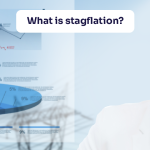When considering investments in mutual funds, it is essential to understand the various costs associated with them. Among these costs, the total expense ratio is an important factor that can impact the returns on your investment. This article aims to provide a detailed explanation of what the total expense ratio means, how it affects mutual fund investments, and the role of tools like the mutual fund SIP calculator in evaluating your investment choices.
The total expense ratio, when investing in mutual funds, represents the percentage of a fund's assets that are utilised to cover the operational costs associated with managing the fund. These costs typically include management fees, administrative expenses, marketing fees, and other operational costs. The TER is deducted directly from the fund's assets, which effectively reduces the returns that investors receive.
For example, if a mutual fund has a TER of 1.5%, this means that 1.5% of the fund's total assets are being used to cover these expenses. As a result, this percentage is deducted from the gross returns before they are distributed to investors. Therefore, understanding the TER is crucial for investors, as it directly influences the net returns on their investment.
When investing in mutual funds, it is important to recognise that the total expense ratio plays a crucial role in specifying the overall cost of the investment. A higher TER means higher costs, which can erode the potential returns over time. Conversely, a lower TER indicates lower costs, which can contribute to higher net returns.
Investors should also consider the TER in relation to the performance of the fund. A fund with a higher TER may justify its costs if it consistently delivers superior returns compared to a similar fund with a lower TER. However, if the returns do not compensate for the higher costs, investors may be better off choosing a fund with a lower TER.
A mutual fund SIP calculator is an essential tool for investors who want to understand the long-term implications of their investment choices. By inputting various parameters, such as the monthly investment amount, expected rate of return, investment duration, and TER, investors can estimate the future value of their investments.
The SIP calculator clearly shows how different TERs can impact an investment's final value. For example, by comparing the outcomes of two similar funds with different TERs, investors can assess whether the additional cost of a higher TER is justified by potentially higher returns.
Understanding the total expense ratio is vital for making informed investment decisions. Investors should carefully review the TER of any mutual fund they are considering and compare it with the fund's historical performance. Additionally, using a mutual fund SIP calculator can help investors visualise the long-term impact of TER on their investments.
It is also important for investors to consider the TER in the context of their investment goals and risk tolerance. While a lower TER can be beneficial, it should not be the sole criterion for selecting a mutual fund. Investors should also consider the fund's strategy, performance history, and alignment with their financial objectives.
The Total Expense Ratio is a critical factor that every mutual fund investor should understand. It represents the cost of managing the fund and directly impacts the returns an investor receives. By carefully considering the TER, using tools like the mutual fund SIP calculator, and aligning investment choices with long-term goals, investors can make more informed decisions that maximise their potential returns.

Revisiting the Gold-Silver Ratio Amid Silver's Outperformance
3 min Read Dec 22, 2025
Midcaps: Sweet Spot or Danger Zone? | What HSBC MF’s Cheenu Gupta Thinks | Ventura Spotlight
3 min Read Dec 17, 2025
Understanding Option Pin risk near expiry
3 min Read Dec 12, 2025
EPS in the Stock Market
3 min Read Dec 12, 2025
What is stagflation?
3 min Read Dec 10, 2025